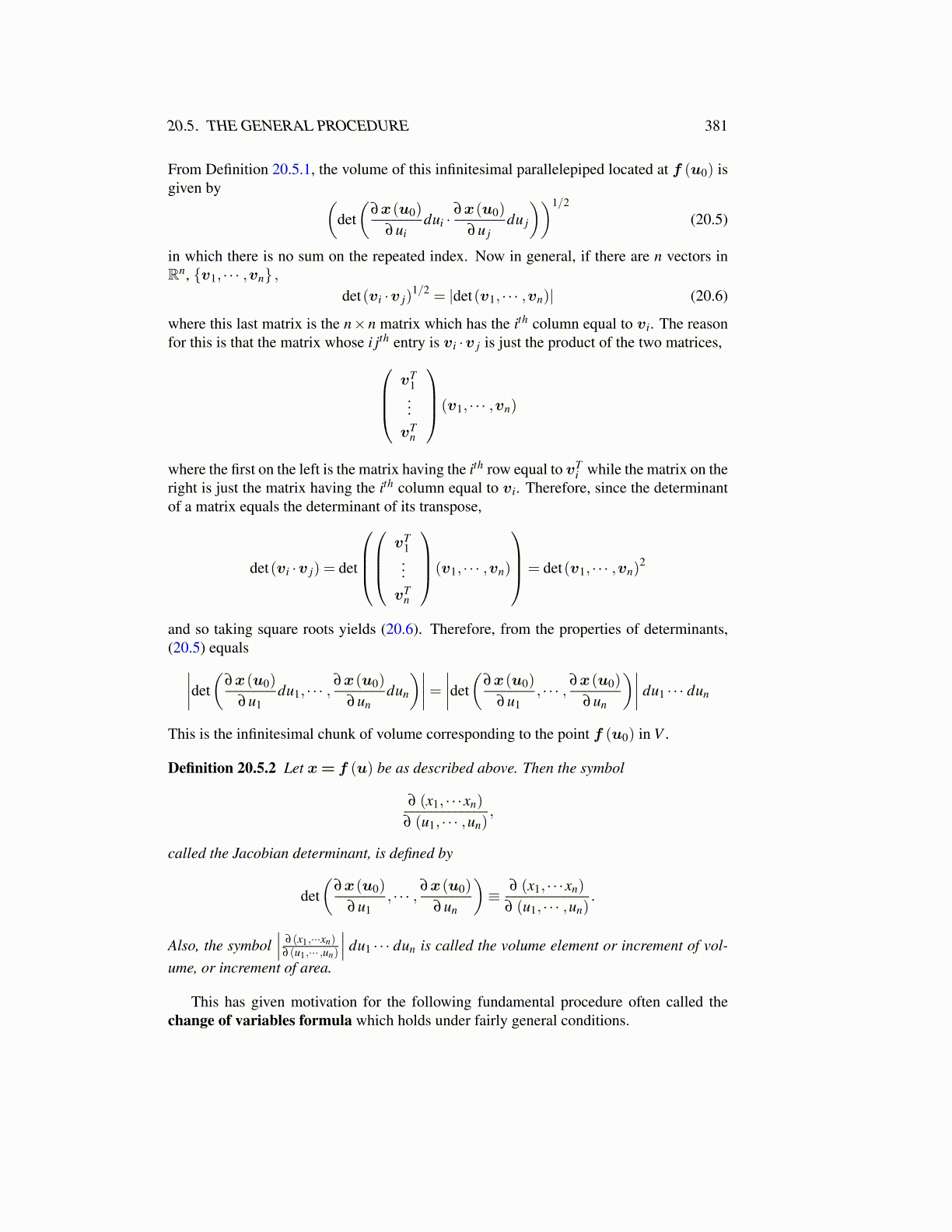
20.5. THE GENERAL PROCEDURE 381
From Definition 20.5.1, the volume of this infinitesimal parallelepiped located at f (u0) isgiven by (
det(
∂x(u0)
∂uidui ·
∂x(u0)
∂u jdu j
))1/2
(20.5)
in which there is no sum on the repeated index. Now in general, if there are n vectors inRn, {v1, · · · ,vn} ,
det(vi ·v j)1/2 = |det(v1, · · · ,vn)| (20.6)
where this last matrix is the n×n matrix which has the ith column equal to vi. The reasonfor this is that the matrix whose i jth entry is vi ·v j is just the product of the two matrices,
vT1...vT
n
(v1, · · · ,vn)
where the first on the left is the matrix having the ith row equal to vTi while the matrix on the
right is just the matrix having the ith column equal to vi. Therefore, since the determinantof a matrix equals the determinant of its transpose,
det(vi ·v j) = det
vT1...vT
n
(v1, · · · ,vn)
= det(v1, · · · ,vn)2
and so taking square roots yields (20.6). Therefore, from the properties of determinants,(20.5) equals∣∣∣∣det
(∂x(u0)
∂u1du1, · · · ,
∂x(u0)
∂undun
)∣∣∣∣= ∣∣∣∣det(
∂x(u0)
∂u1, · · · , ∂x(u0)
∂un
)∣∣∣∣ du1 · · · dun
This is the infinitesimal chunk of volume corresponding to the point f (u0) in V .
Definition 20.5.2 Let x= f (u) be as described above. Then the symbol
∂ (x1, · · ·xn)
∂ (u1, · · · ,un),
called the Jacobian determinant, is defined by
det(
∂x(u0)
∂u1, · · · , ∂x(u0)
∂un
)≡ ∂ (x1, · · ·xn)
∂ (u1, · · · ,un).
Also, the symbol∣∣∣ ∂ (x1,···xn)
∂ (u1,··· ,un)
∣∣∣ du1 · · · dun is called the volume element or increment of vol-ume, or increment of area.
This has given motivation for the following fundamental procedure often called thechange of variables formula which holds under fairly general conditions.